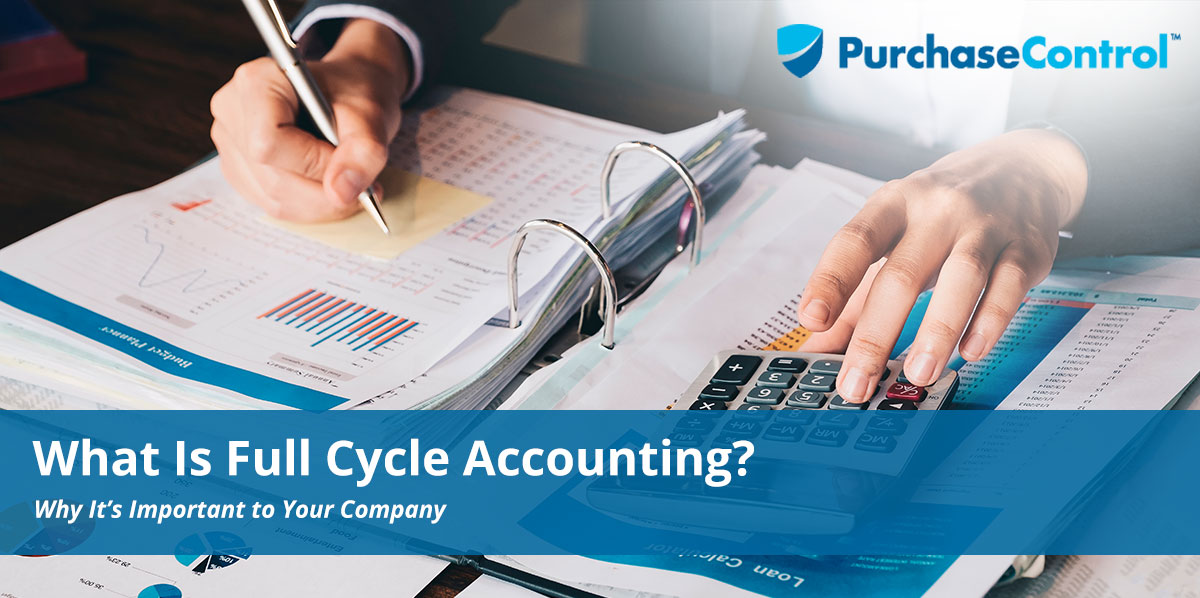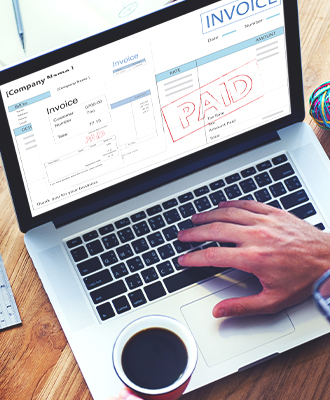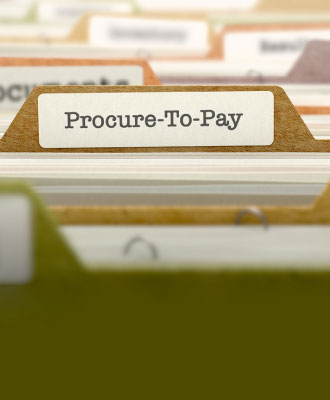What Is Full Cycle Accounting?
Full cycle accounting is the term used to describe the entire set of activities the accounting department uses to create the financial statements for a reporting period. Known as the accounting cycle, it includes recording business transactions over the course of the reporting period, adding any necessary adjustment entries, producing the financial statements, and closing the books for that period.
The steps are:
1. Recording Accounting Transactions
This is making a record of purchases and receipts of payment. They are recorded as journal entries in the appropriate sub-ledger. For instance, purchasing office supplies would be recorded on the accounts payable ledger.
Journal entries are used to record business transactions. There are three different types of journal entries:
- Adjusting entries are used to adjust numbers up or down as needed.
- Compound entries are when there is more than one debit, more than one credit, or more than one of both debits and credits. It’s a combination of simple journal entries.
- Reversing entries are used to revert to the original number. These are generally used when errors have been made.
Ledger accounts contain records of all business transactions. The general ledger is a summary of all the amounts entered into journals and follows the transactions to one or more ledgers. It is a separate record in the general ledger that is linked to specific assets, liabilities, revenue, expenses, or equity. For example, you’ll have ledgers for: cash, accounts receivable, accounts payable, fixed assets, stockholder equity, revenue, cost of goods sold, accrued expenses, income tax expense, etc.
2. Approve Accounting Transactions
After approving accounting transactions, posting them to the general ledger, which includes all sub-ledgers.
3. Prepare Unadjusted Trial Balance
This is a list of all the transactions that occurred during the accounting period.
4. Record Adjusting Journal Entries
Some of the most common adjusting entries are revenue deferrals, depreciation expense, and expense accruals.
5. Generate Adjusted Trial Balance
This is the unadjusted trial balance with the adjusting journal entries included.
6. Prepare Financial Statements
This includes the balance sheet, statement of cash flow, income statement, etc.
The balance sheet is, also known as the statement of financial position, presents the company’s financial position at the end of a reporting period. It is a snapshot of the financial situation at a point in time. It allows creditors to see what a company owns, as well as what they owe to others.
The statement of cash flows, or cash flow statement is a financial report that indicates the amount of cash and cash equivalents that enter and leave a company. It indicates how well an organization manages its cash position, or how well the company is generating cash to pay its debts and fund its operation. The cash flow statement allows investors to see how the company is running, and help them determine whether or not they want to invest. Creditors use the statement to determine how liquid the company is and to determine if they can afford to extend a line of credit to the organization. The CFS includes cash from operating activities, financing activities, and investing activities.
The income statement, or the profit and loss statement, or the statement of revenue and expense, the income statement focuses on an organization’s revenue and expenses for the period. In it, you’ll find revenue, expenses, gains, and losses. There is no difference between cash and non-cash receipts – so there’s no way to tell which purchases were made with credit and which ones were made with cash. The income statement provides insight into company operations and how efficient the management is. It also shows under-performing sectors and demonstrates performance relative to industry peers.
These three financial statements are a mandatory part of a company’s financial reports since 1987.
7. Transfer Temporary Account Balances and Reset to Zero
Transfer any temporary account balances such as revenues and expenses for the accounting period to the income summary. Then, rest the temporary account balances to zero for the next accounting period.
Closing entries are made at the end of an accounting period to transfer balances from the temporary account to the permanent account. Closing entries also transfer the owner’s drawings account balance to the owner’s capital account.
8. Generate Post-Closing Trial Balance
This balance should reflect the closing of temporary accounts. This is a list of all the balance sheet accounts that contain non-zero balances at the end of a reporting period. It is used to verify that the total of all debit balances equals the total of all credit balances, which should net to zero. It contains no revenue, gain, expense, or loss, or summary account balances because these temporary accounts have already been closed and had their balances moved to the retained earnings account as part of the closing process.
Full cycle accounting may also refer to the entire set of transactions associated with specific business activities, such as:
- Payroll: Staff members submit a time card or timesheet to the payroll system or staff. Once reviewed for accuracy, supervisors make the necessary adjustments and approve them for payment. The payroll is aggregated for gross pay, including all the taxes and other deductions for net pay. At that point, the payment is issued to employees, in the form of a check or direct deposit. These activities are the full cycle of activities for paying staff members.
- Sales: An organization purchases goods, stores them, processes customer orders, picks the items from stock, sells them on credit, and then collects payment from customers. This is the full cycle of activities for selling goods and services to customers.
- Purchasing: This is where the full cycle accounts payable actions take place. An employee submits a purchase requisition for goods or services, and the purchasing department issues a purchase order. From there, the receiving department receives the goods, and the accounts payable team processes the payment to the supplier. This cycle represents everything required to obtain goods and services for the organization.
“When positions are labeled full cycle, it means the employee must handle all the steps in that particular accounting cycle. A full cycle payroll clerk is responsible for all the steps in the payroll cycle, where an accounts payable clerk is responsible for all the steps for the purchasing cycle.”
Full cycle accounting may also be used to refer to a company’s standard business cycle. For instance, if a business usually takes three months to produce goods, hold them in stock, sell them to their customers, and receive payment for them, then the full operations cycle is three months.
Manage your full cycle accounts payable for procurement with PurchaseControl
Find Out How








